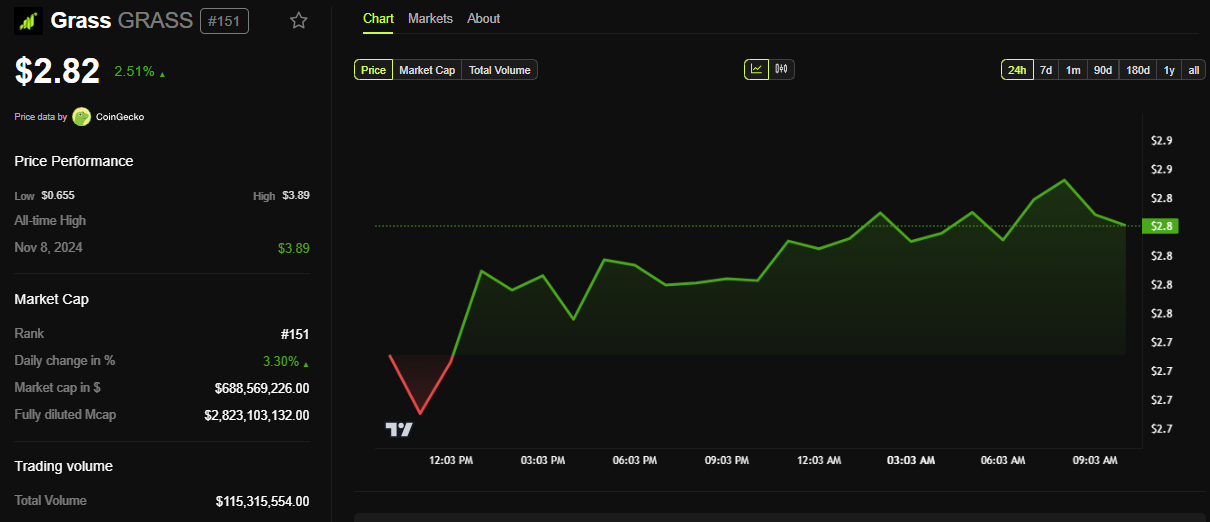-
Grass’s strategic pivot towards AI-powered solutions promises to not only enhance user experience but to also reshape the decentralized data landscape.
-
The integration of multimodal search capabilities could position Grass ahead of its competitors, offering users unprecedented access to diverse data formats.
-
“By 2025, we envision that our platform will redefine how data is sourced and utilized,” said Grass CEO during the recent seminar, emphasizing the transformative potential of the new technology.
Grass aims to redefine decentralized data processing with its ambitious 2025 roadmap focusing on AI and multimodal search technologies.
Revolutionizing Data Processing with AI and Multimodal Search
The Grass network is poised to lead the next wave of innovation in the decentralized ecosystem through its emphasis on AI integration and multimodal search functionalities. With a growing user base of over 3 million, the network’s ambition to enable real-time insights from various data formats—video, audio, and text—demonstrates its commitment to providing enhanced usability and accessibility.
By leveraging AI technologies, Grass aims to elevate the user experience, making data retrieval faster and more intuitive. The upcoming enhancements are not merely incremental; they represent a quantum leap that could transform how information is utilized across sectors.
In particular, the platform’s plan to phase out its Chrome extension in favor of a more robust desktop node aims to streamline user interactions and boost network efficiency, heralding a new era of data distillation powered by advanced algorithms.
Emphasizing Network Efficiency: The Sion Initiative
With the introduction of the Sion Phase 1 Results, Grass aims to underscore its dedication to network efficiency. Partnering with key storage providers has resulted in a staggering 60X faster data retrieval rate, a remarkable achievement that highlights the platform’s commitment to speed and accuracy.
The shift to lower network activity post-launch indicates a strategic focus on ensuring stability while storage partners ramp up their capacities. Grass’s proactive stance in addressing potential bottlenecks showcases its readiness to adapt and innovate.
A Year in Review: Grass’s 2024 Achievements
Reflecting on the seismic shifts of 2024, Grass celebrated a watershed year marked by a significant user increase from 200,000 to an impressive 3 million. This rapid expansion was accompanied by a groundbreaking 1000X increase in indexed videos and the distribution of over $196 million in tokens.
The remarkable metrics are complemented by the successful execution of a high-profile airdrop, which elevated the platform’s competitive edge in the decentralized applications sector. However, with success came challenges, including controversies surrounding token distribution that necessitated a more transparent communication strategy moving forward.
Navigating Controversies: A Commitment to Transparency
In response to user concerns about token allocation during the airdrop, Grass is taking concerted steps to restore trust. By engaging in transparent dialogue through seminars and community outreach, the network aims to address grievances and ensure equitable access to future token distributions.
Despite facing criticism linked to phantom wallet issues, Grass has managed to maintain its growth trajectory, evidenced by its recent trading performance. Currently trading at $2.82, the GRASS token reflects a resilient market presence amidst the company’s ambitious plans for 2025.
Conclusion
As Grass charts its course into 2025, its focus on AI and enhanced data processing techniques positions it as a frontrunner in the decentralized landscape. With ongoing commitments to transparency and user engagement, Grass is not just aiming for growth but is also redefining the standards for decentralized applications. The culmination of these efforts suggests a promising outlook, not just for the platform but for the evolution of data utility in the broader cryptocurrency market.







